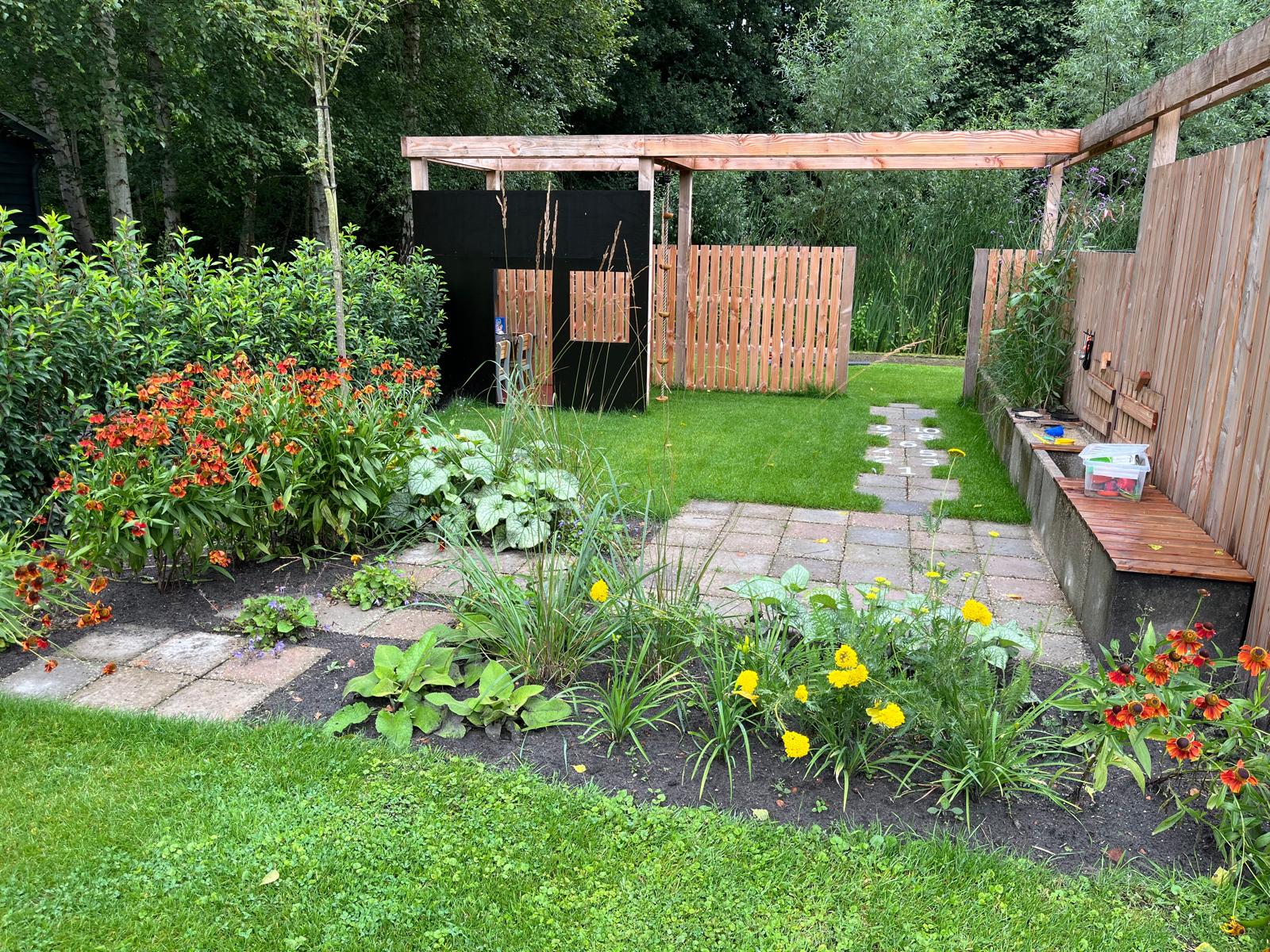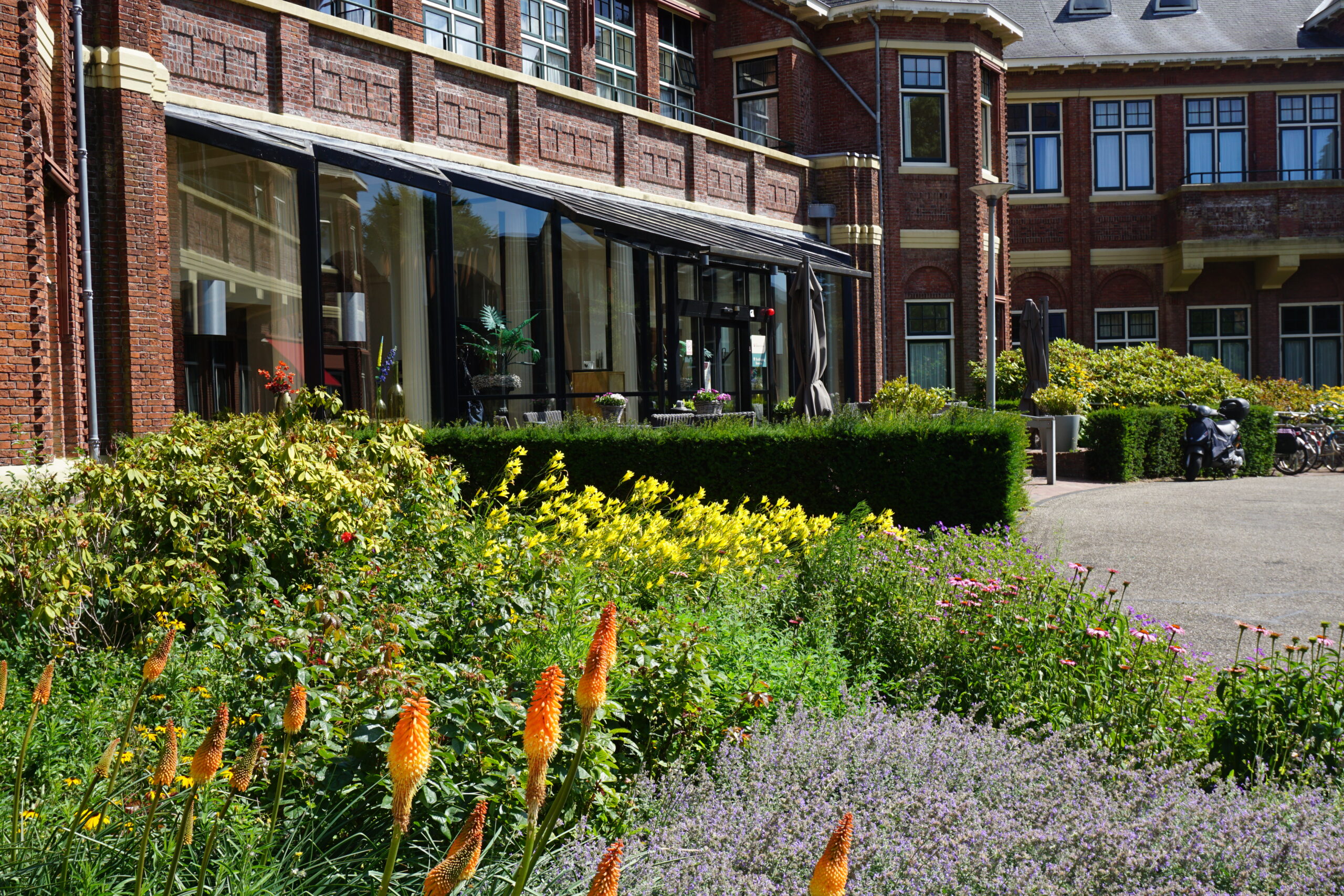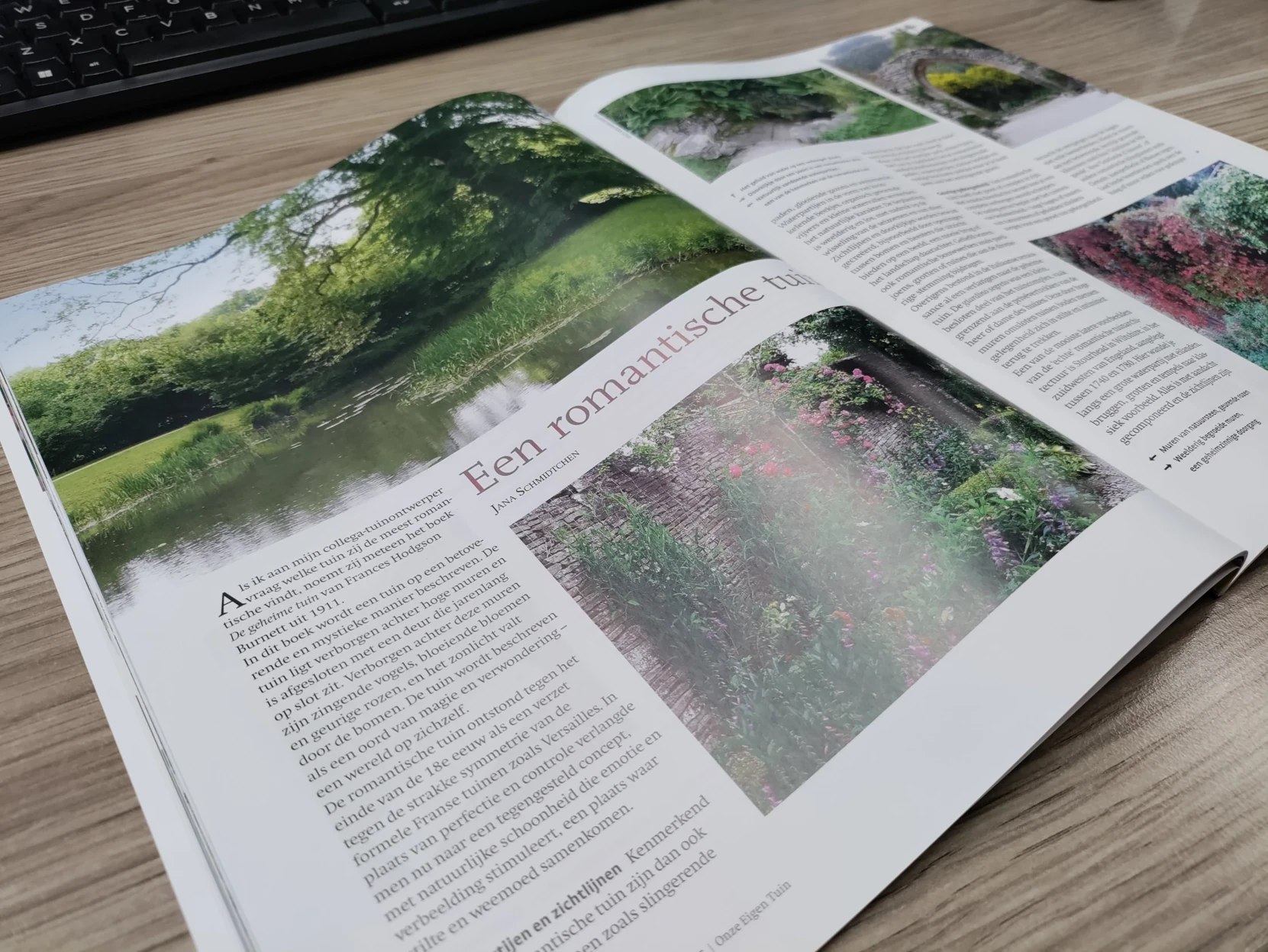100 years of Gardens of Mien Ruys
When Mien Ruys conducted her first planting experiment in 1924 in the shade of the fruit trees in her parents' orchard, she could of course not have imagined that this experiment would be followed by many others and that all these experiments would grow into a complex of some 2.5 hectares!
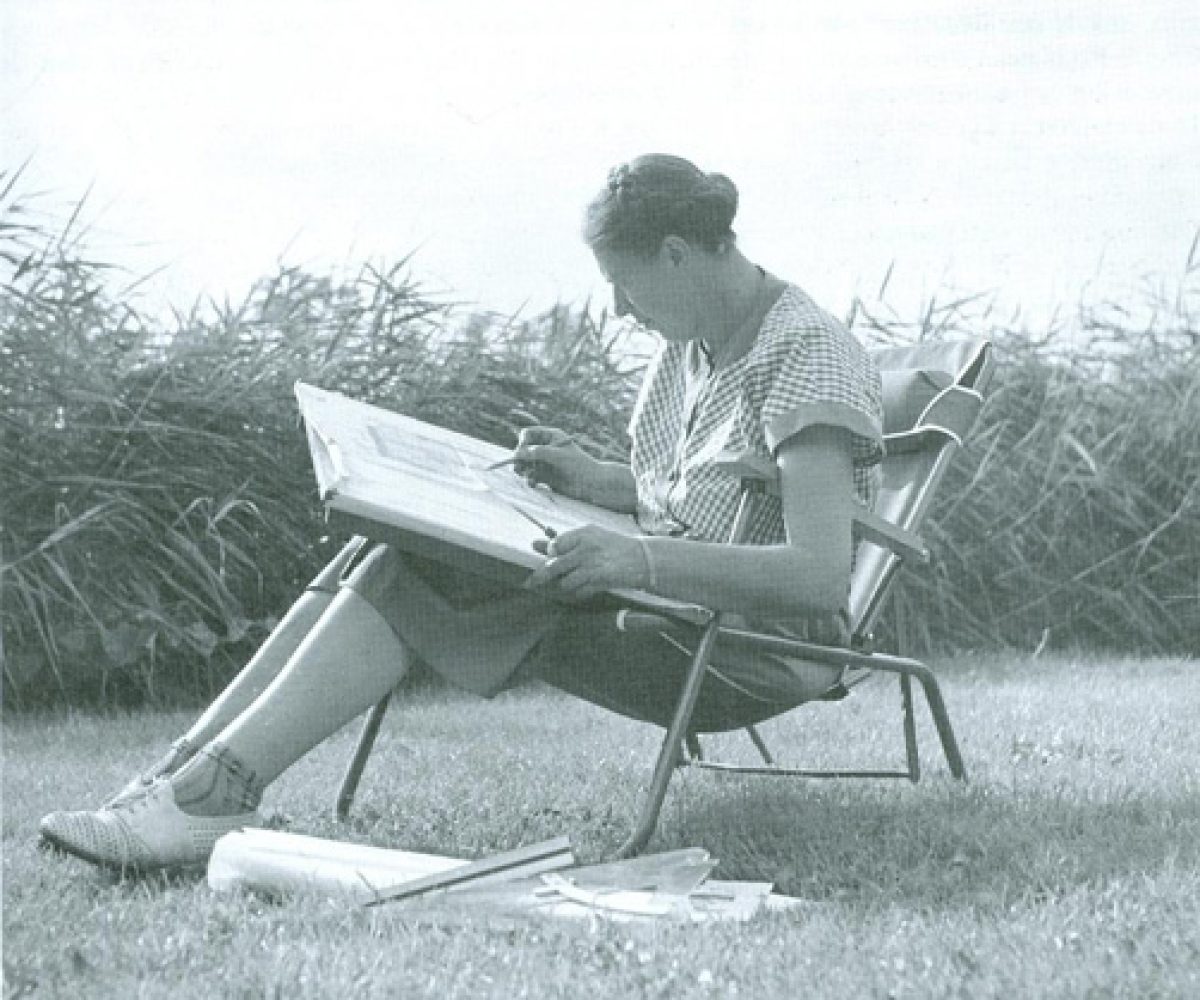
For seventy years she experimented and some of these test gardens are now national monuments, some of them municipal monuments. After her death in 1999 the experimenting continued, by designers of Buro Mien Ruys but also by others. The testing of new materials and plant combinations is always central, with the aim of learning from them and showing and sharing these experiences. And so there is now a very special milestone: in 2024 the Gardens of Mien Ruys will be 100 years old!
On the occasion of the 100th anniversary, new tests have been designed and constructed. At the moment, the preparations for the construction of three small city gardens are in full swing. Three designers from Buro Mien Ruys each designed a city garden of 5 x 7 meters, completely different but with a common starting point: green and sustainability play an important role. In each garden, this has been worked out in a different way. Aesthetics also plays a very important role here, because a garden design must above all be timelessly beautiful and inspire you to get started yourself.
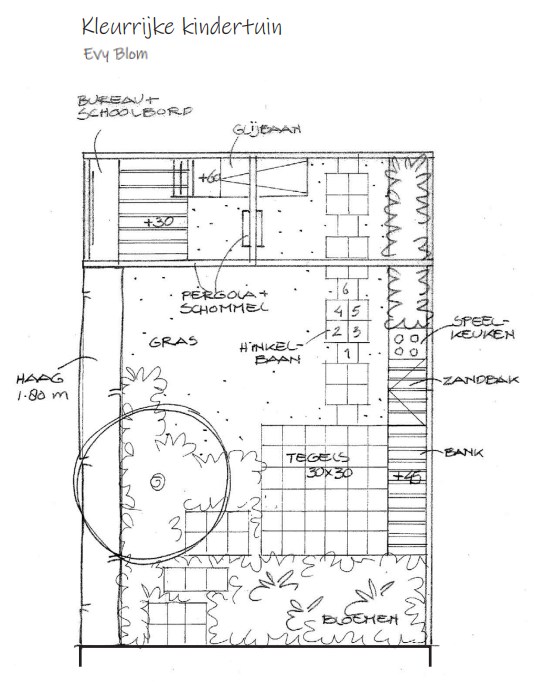
Garden 1 - Colorful children's garden
Garden 1. Here the family with small children is central. There is plenty of space in the garden for playing without the garden being filled with equipment. For example, a small sandbox can be closed off with a wooden lid and is then part of a long bench. A swing hangs from the pergola and the stepping stone path is also a hopscotch. The aim is that, when the children are in bed, there will be hardly any traces of toys and play equipment in the garden. The lawn is not that big but runs across the width of the garden, making it seem more spacious. There is little paving and 30×30 tiles were chosen for the small terrace and the path: these could be second-hand tiles. The border-like planting lies against the facade so that the flowers are also clearly visible from the house. The species used are a 'classic Mien Ruys range', as she used in her ready-made borders: strong and healthy, long-flowering and low-maintenance. Ideal for a busy family.
Garden 2 - Minimalist wadi garden
Garden 2. This garden focuses on modern and minimalist architecture. New materials have been used here, but they are sustainable, such as the 100% recycled concrete tiles. The fence is made of composite weatherboarding. Plastic, so sustainable, but at the same time practical because it is maintenance-free. Composite is already widely used in construction as facade cladding, but it is an experimental product for making garden walls. A central element in the garden is a wadi for collecting rainwater. The wadi is provided with border-like planting that is repeated in the planting along the edges of the garden. Planting that is suitable for planting in a wadi must not only tolerate being flooded occasionally, but above all be able to cope with extreme drought. A wadi bottom is provided with a draining bottom to quickly drain rainwater. This means that the growing conditions between rain showers are very dry.
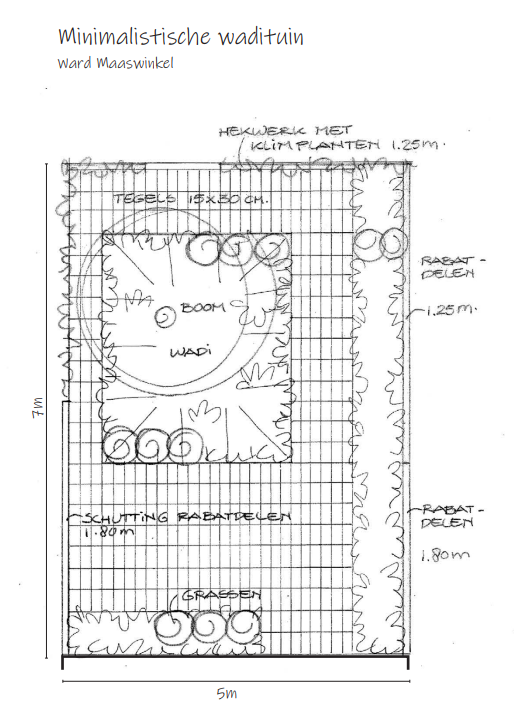

Garden 3 - Native eco garden
Garden 3. Sustainability plays a prominent role in this garden. The paving materials are (second-hand) concrete tiles in the size 40×60 combined with semi-hardened olivine. Part of the property boundary is made by stacking peat crates, black plastic plant crates, an original way of reusing these crates. In addition to being a boundary, they also form a cupboard wall for, for example, pots with herbs. One or more compartments can also be filled with straw and wood as an insect hotel. There is space for growing your own vegetables, there is a hedge of berry bushes and the tree - which should not be missing in any garden - is a fruit tree. Only native wild flowers have been used for planting the borders. An interesting experiment: which wild flowers lend themselves to being combined in a border?
Other current affairs

Designing a garden? The biggest benefits of a green garden
More and more people are discovering the importance of greenery in their living environment. Not only because a garden full of plants, trees, and flowers looks beautiful, but also because it contributes to a healthier and more sustainable world. But what exactly are the benefits of a green garden? And what should you consider when creating a garden design?
